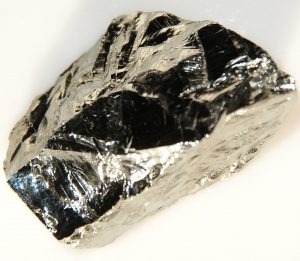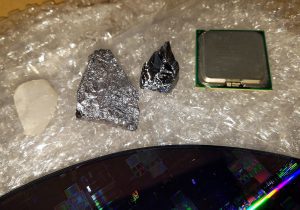But an important breakthrough is still missing: the transition to silicon, the semiconductor found in nearly every electronic circuit and product today. Because in the 1950s and 1960s, almost all transistors were made of monocrystalline germanium. This element is easier to process thanks to its low melting point and allows for high conversion speeds due to the rapid influx of charge carriers in the crystal lattice.

Germanium problem
However, germanium, as a transistor material, has a number of disadvantages: since the band gap in this semiconductor is relatively small at 0.64 eV, unwanted leakage currents often occur. Above a temperature of about 75 degrees, the thermal energy is sufficient to make the material conductive. As a result, germanium transistors lose their switching function above this temperature and become unusable. On the other hand, silicon is significantly more stable: due to the large band gap, transistors made of this material remain functional even at high temperatures.
The problem, however, is that silicon has a higher melting temperature of 1,415 degrees and is more reactive, which makes it difficult to produce monocrystalline blocks of high purity: “Molten silicon reacts with almost every crucible, even quartz glass reacts with the melt, contaminating it with oxygen and other impurities.” which then degrade the electronic performance of the crystal,” explains Michael Riordan of the University of California, San Diego. As a result, it was initially almost impossible to produce silicon semiconductors with the required purity and doping.
First Silicon Transistor Competition
It wasn’t until 1954 that researchers were able to overcome these hurdles—and again this happened twice independently and around the same time: At Bell Labs, chemist Morris Tanenbaum developed a process by which the rate of doping of silicon could be controlled while a single crystal was growing. The melt was withdrawn. On January 26, 1954, the team succeeded in creating the first npn silicon transistor with good amplification effect. However, Bell Labs chose not to publicize or initially patent this invention.
At the same time, former Bell Labs chemist Gordon Teal was also working at the young Texas Instruments company on a process to produce silicon semiconductors with the desired properties. To circumvent the problem of insufficient purity, Thiel’s team developed a way to make the interlayer of the transistor sandwich extremely thin — just 25 microns thick. This allowed the charge carriers in semiconductors to overcome this barrier despite some impurities. On April 14, 1954, researchers managed to create a working npn silicon transistor.

Propaganda coup
Unlike Bell Labs, Texas Instruments did not hesitate to announce this breakthrough as quickly as possible: as early as May 10, 1954, Teal presented its new silicon transistor at a specialized conference: “Contrary to what my colleagues tell you about the bleak prospects for transistors Silicon: I have several in my pocket.
Then Thiel made a very practical demonstration of the advantages of these components to the audience: he dipped a germanium transistor connected to a loudspeaker in hot oil, which immediately stopped the music that was playing beforehand. Repeat the same with a silicon transistor – and the music continues. The publicity stunt paid off: the method Teal had developed prevailed—also because the competing method was less easy to standardize. This made Texas Instruments the first manufacturer to mass-produce silicon transistors.
New era
The silicon era began with this breakthrough – and paved the way for the rapid development of the semiconductor and computer industries. During the 1960s and 1970s, silicon transistors increasingly replaced aging germanium components, while new types of transistors facilitated their mass production, miniaturization, and integration into integrated circuits.
“These semiconductor devices put computers in our pockets, on our desks, and enabled global communications networks,” says Riordan. “The transistor isn’t called the nerve cell of the information age for nothing.” Without it, our world would look very different today.

“Total coffee aficionado. Travel buff. Music ninja. Bacon nerd. Beeraholic.”







More Stories
Coral Seeding: Artificial Insemination Makes Coral More Heat Tolerant
Fear, Anger, and Denial: How People Respond to Climate Change – Research
LKH Graz: Using radiation to combat heart arrhythmias